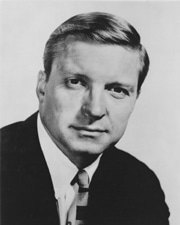The 1977 Final Rule Revisited… Revisited… Revisited …and Kept
Technological progress and market needs moved the industry forward, but the Final Rule remained as stated in 1977. For example, in 1985, the FDA approved the Nuclear 22 Channel Cochlear Implant system for general use in adult patients with profound hearing loss after the device had spent 10 years in experimental stage. Unlike traditional hearing aids, which were now Class 1 devices, cochlear implants were and remain Class 3 devices.
The 1993-2003 decade was marked by gossipy, behind-the-scenes discussion and efforts to revise the Final Rule as the result of the Senate investigations, technology changes affecting the industry, and political intrigue among the major players. The need for reform was highlighted by a series of investigations of hearing aid industry abuses conducted by Senator Charles Percy’s Senate Special Committee on Aging in 1993. The hearings focused on hearing aid advertising and hearing aid sales. Senator Percy’s involvement was especially noteworthy for connecting hearing aids to the medical profession and to consumers because he himself wore hearing aids as the result of noise exposure as a gunner in WWII. One result of the investigations was a slap at the hearing aid manufacturing industry and its unsubstantiated claims. Miracle Ear/Dahlberg paid a $2.75 million civil penalty for “false and unsubstantiated claims” made from 1988 to 1993 (mainly in cable TV ads) that its instruments were “noise suppressors.”
In 1993, the FDA issued an Advance Notice of Proposed Rulemaking and held public hearings with the intent of reviewing and possibly revising the 1997 Rule. In 1997, the FDA initiated a year of data collection for the purpose of considering means of updating the Final Rule to reduce the record keeping and reporting burdens without deleteriously affecting consumer/patient care. The FDA prepared a report to the Office of Management and Budget (OMB) detailing the results and recommendations, summarized in Table 1.
Record Keeping Cost to Provider (# of hours x industry hourly wage) |
$10,400,000.00 |
Reporting Costs (total hours x industry hourly wage) |
$1,736,949.00 |
Table 1. 1998 estimates of Hearing Aid Final Rule Costs, FDA report to OMB.1
The FDA seemed to be leaning toward endorsement of the audiological role in hearing aid fitting, perhaps by substituting a requirement for audiometric evaluation for the medical examination requirement, perhaps with an unstated goal of inserting audiologists as gatekeepers to (ethically) monitor consumer-dispenser traffic. The medical and dispensing membership groups banded against this possible threat by calling for “open access” on the grounds that, in the words of one of their attorneys, the proposed FDA rule change represented “… nothing more than an effort by certain segments of audiology to gain competitive and economic advantage—all to the detriment of the hearing impaired.”
The International Hearing Society (IHS) commissioned and published a study entitled “Economic Analysis of Proposed Regulations Governing the Provision of Hearing Testing Services and Sales of Hearing Instruments.” As a defense of open access, the report concluded that the proposed Rule changes would restrict “access to hearing healthcare” and cost consumers as much as $250 million annually in “value.” Specifically, the report claimed that requiring “prepurchase” testing by an audiologist would reduce hearing aid fittings by 11-22% annually. It was silent on the cost to consumers of hearing aid fittings performed in the absence of credible measures of hearing loss.
There followed a series of government and political actions in response to all of the above. In December, 2000, the OMB publicized a “notice of receipt of the FDA proposed revision to the Hearing Aid Rule for review prior to publication in the Federal Register.” This was followed by formation of a Regulatory Review Plan a one month later when President Bush assumed office. Just a month after that, the proposed Hearing Aid Rule was withdrawn and sent back to Health and Human Services (HHS) for further review, where it languished and was finally withdrawn from the HHS Regulatory Agenda at the end of the year by HHS Secretary Tommy Thompson.
After all was said and done, the 1977 Final Rule remained intact and it was back to business as usual.
Footnotes & References
1Supporting Statement for Hearing Aid Devices, Professional and Patient Labeling and Conditions for Sale. 21 CFR 801.420 and 801.421. OMB No. 0910-0171. Cost estimates were based on FDA assumptions that: 1) average price of hearing aids was $670/aid, 2) there were 9900 dispensers nation-wide, and 3) each dispenser averaged 162 hearing aid sales per year.
Editor’s note: This is part 6 of a 7 part series. Click links for Part 5 or Part 7.






